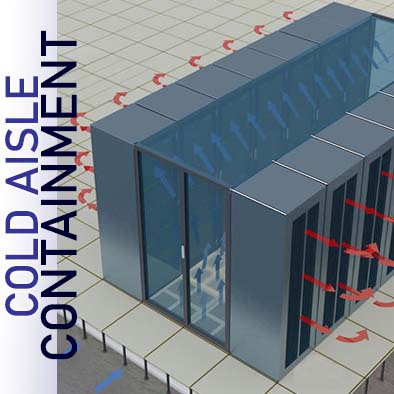In industries where the slightest impurity can compromise the integrity of the manufacturing process or the quality of the product, clean rooms play a pivotal role. These specialized environments, prevalent in pharmaceuticals, semiconductors, aerospace, and biotechnology sectors, are designed to maintain extremely low levels of particulates. The critical importance of clean room environments cannot be overstated, as they ensure the safety, efficacy, and quality of high-tech manufacturing processes and sensitive scientific research. Let’s look into the risks associated with clean room contamination and simultaneously provide comprehensive strategies for prevention and effective clean room cleaning.
Understanding Contamination Risks
Types of Contaminants
Contamination in clean rooms can originate from various sources and manifest in multiple forms, including particulate, microbial, and chemical contaminants. Particulate contaminants, such as dust and fibers, can significantly impair manufacturing processes, especially in the semiconductor and pharmaceutical industries. Microbial contaminants, including bacteria, fungi, and viruses, pose serious risks in sterile pharmaceutical and biotechnological environments. Chemical contaminants, such as vapors and aerosols, can arise from cleaning agents, process materials, and even outgassing from equipment and building materials, potentially affecting sensitive processes and products.
Sources of Contamination
The sources of contamination in clean rooms can be broadly categorized into external and internal origins. External contamination enters the clean room through incoming air, materials, and equipment, necessitating stringent filtration and quarantine protocols. Internal sources, however, originate from personnel, shedding from clean room garments, equipment emissions, and process-generated contaminants. Understanding these sources is crucial for developing effective contamination control measures.
Impact of Contamination
The consequences of contamination in clean room environments can be severe, ranging from product defects and yield reductions to increased production costs and significant safety hazards. In the pharmaceutical industry, contamination can lead to product recalls and serious health risks for end-users. In semiconductor manufacturing, even the smallest particle contamination can cause circuit failures, leading to substantial financial losses. Furthermore, regulatory non-compliance due to contamination can result in legal penalties and damage to a company’s reputation.
Clean Room Classification and Standards
Adherence to international standards, such as ISO 14644, is fundamental in defining, classifying, and maintaining clean room cleanliness levels. These standards specify the maximum allowable particle concentrations for different clean room classes and provide guidelines for testing and monitoring cleanliness. Understanding and adhering to these standards is essential for clean room design, operation, and validation, ensuring that contamination risks are minimized and regulatory compliance is maintained.
Strategies for Contamination Prevention
Design and Construction
The foundation of effective contamination control lies in the meticulous design and construction of the clean room. Selecting non-shedding materials for surfaces and implementing advanced air filtration systems, such as HEPA and ULPA filters, are critical steps. Additionally, designing clean rooms with an understanding of airflow dynamics can significantly reduce the risk of contamination. Implementing strict access controls and optimizing the layout to minimize personnel and material movement can further mitigate contamination risks.
Cleaning and Maintenance Protocols
Developing and adhering to rigorous cleaning and maintenance protocols is vital for maintaining the cleanliness of clean rooms. This includes establishing schedules for routine and as-needed cleaning, selecting appropriate cleaning agents and materials that are compatible with the clean room environment, and employing effective cleaning techniques. Specialized clean room cleaning services can provide high levels of cleanliness that are up to international standards and practices. The maintenance of cleaning equipment is equally important, as improperly maintained equipment can itself become a source of contamination.
Personnel Training and Compliance
The role of trained personnel in maintaining clean room integrity cannot be underestimated. Comprehensive training programs on contamination control, proper gowning procedures, and behavior that minimizes contamination risk are essential. The use of appropriate protective clothing and adherence to strict behavioral protocols significantly reduce the risk of human-induced contamination.
Advanced Contamination Control Technologies
Ionization Systems
Ionization systems are employed to neutralize static charges on surfaces and airborne particles, effectively reducing particle adherence to surfaces and preventing contamination. This technology is particularly beneficial in semiconductor manufacturing, where electrostatic discharge can attract contaminants and damage sensitive components.
UV Sterilization
Ultraviolet (UV) sterilization is a powerful method for inactivating microbial contaminants on surfaces and in the air. By exposing clean room environments to UV light, particularly in unoccupied spaces or during off-hours, facilities can achieve an additional layer of microbial control, complementing traditional cleaning and sterilization methods.
Real-time Monitoring and Detection
Advanced sensors and monitoring systems provide real-time data on particle levels, environmental conditions, and potential contamination events. These systems enable prompt detection and response to contamination risks, ensuring that clean room environments remain within specified cleanliness standards.
Trust in Data Clean Asia
The challenge of maintaining clean room environments free from contamination is multifaceted. By adopting a holistic approach to contamination control, industries reliant on clean room environments can ensure the integrity of their processes and products, ultimately achieving operational excellence and regulatory compliance.
Data Clean Asia stands at the forefront of addressing these critical needs. With an unwavering commitment to excellence, Data Clean Asia offers comprehensive clean room cleaning and laboratory cleaning services tailored to meet the unique requirements of various industries, including electronics, pharmaceuticals, and more. Understanding the pivotal role clean rooms play in the manufacturing process, our services are meticulously designed to uphold and exceed the specific cleaning standards and regulations each industry demands. Our highly experienced team of clean room cleaners is proficient in the International Organization for Standardization (ISO) guidelines, ensuring that every cleaning task, from disinfecting micro-particles to managing spills, is executed with precision and care.
Contact Data Clean Asia today to ensure your clean room environments are in expert hands.







